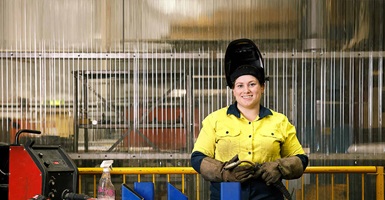Do cover letters matter? According to Chisholm Career Education Coordinator Katharine Beech, you should always assume they do.
“You never know who will be reviewing your application,” Katharine says. “It could be someone who doesn’t care for cover letters too much, or it could be an employer that bases their entire decision on how readable that cover letter is.”
But what should you write in a cover letter? According to Katharine, the quality depends on three things:
- How well you understand the general purpose of cover letters
- How effectively you structure the letter
- How you format the information on the page.
Read on for her detailed advice on crafting the perfect document.
What are cover letters for?
Katharine says that in general terms, the purpose of a cover letter is to “engage the reader so they want to put your application in the ‘Yes’ pile and offer you an interview”.
But how exactly do you engage a potential employer? She says it’s important to explain why you’re a good fit for a particular role, rather than just listing your skills and experience. “Use the cover letter as an opportunity to show you understand the role you are applying for,” she says. “Avoid generic language.”
That means spending time researching the specifics of the job and writing a new cover letter for every role you apply for, not simply recycling a cover letter over and over.
Getting the structure right
Your letter should contain three main sections, according to Katharine:
- First, an introductory paragraph that “identifies the relevant skills and values you have to offer”. The keyword here is relevant – you should only list skills and values that can be applied to the role.
- Second, include a “middle section that has some proof of the skills you’ve listed in the first paragraph”. This can include relevant qualifications, prior employment, and volunteering and work experience.
- Third, a paragraph that explains why you believe you are the best person for the job. “This is your opportunity to make sure an employer knows you’re talking specifically to them, and that you haven’t sent the same cover letter out with a thousand applications,” Katharine says. “It’s a really good time to identify the organisation’s values and mention them, or to identify a key project the company is working on that you would like to work on, too.”
The ideal length and look
Don’t make your cover letter too long or dense, Katharine advises: it’s better to convey the information as succinctly as possible.
“The reader probably doesn’t want to read great slabs of text,” she says. “We wouldn’t recommend anything more than one page.”
Finally, take a moment to look over your cover letter and make sure the font types and size match those on your résumé. “That’s all about improving your personal branding and creating a sense of consistency. It shows that you pay attention to details.”


